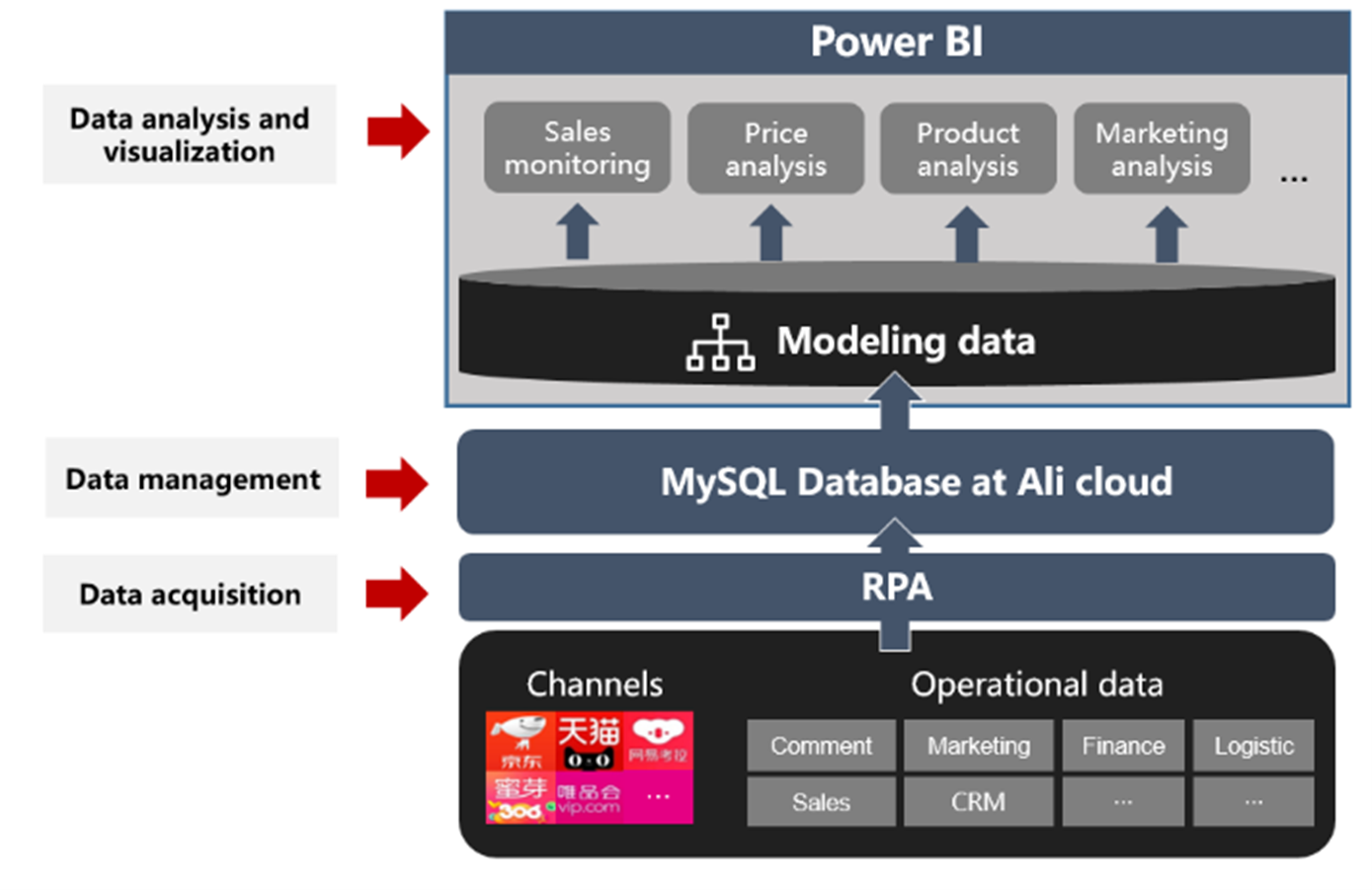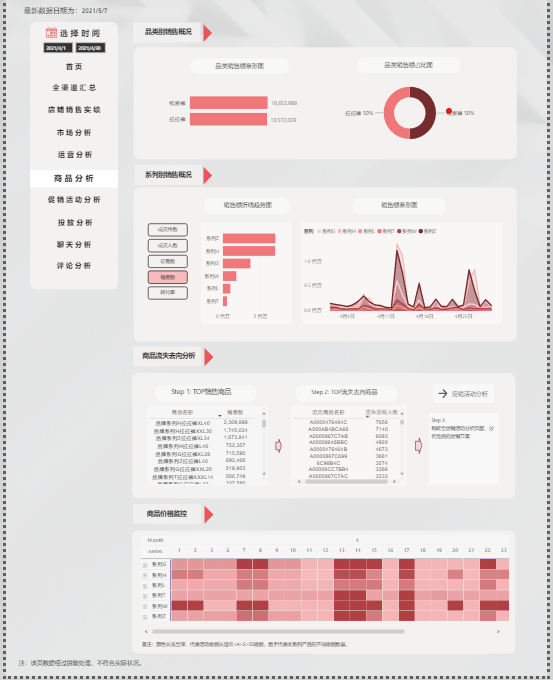Designing and implementing a custom solution
With these challenges in mind, transcosmos got to work. Leveraging their extensive e-commerce and data analytics experience, transcosmos designed a custom solution to fit the customer’s needs.
The solution is composed of three parts to address the three key challenges identified by the customer.
The first is a data acquisition layer. Here, transcosmos adopted a Robotic Process Automation (RPA) program to automatically collect data from all six of the customer’s stores. This automation meant that the customer no longer had to follow tedious, manual processes to collect data from their various channels, freeing up their data scientists to add value elsewhere.
The second layer is data management, designed to solve the data quantity problem. The customer already had some infrastructure in the cloud, so transcosmos expanded that footprint and implemented MySQL database to collect, store, and manage the customer’s vast amounts of data. By using the cloud, transcosmos helped the customer unlock unprecedented scale for their database, enabling their infrastructure to scale right alongside their data needs with ease.

A visual representation of transcosmos’ solution (photo courtesy of transcosmos)
The third layer is data analysis and visualization, designed to help the customer respond quicker to their e-commerce activity. For this, transcosmos implemented Microsoft Power BI, an industry-leading visualization platform designed to help users derive insights from their data and make better business decisions.
“For our customer, building that first Power BI dashboard was a bit of a milestone,” explains Judy Li, Data Analyst at transcosmos. “Before implementing Power BI, our customer had a whole team of people doing repetitive jobs to produce reports every day, week, and month. It was costly, inefficient, and often inaccurate. With Power BI, we were able to automate all of that work, freeing up those analysts to add value in other places.”
As noted by Li, transcosmos didn’t stop at one Power BI dashboard for their customer. To maximize impact and provide specific views requested by the customer, transcosmos has already built nine different dashboards for their client, including two recently added text analysis dashboards featuring chat and comment text analysis, and they have plans to add more. “Our client needed one all-up view of the business, so we designed an overarching dashboard to give them that general information regarding key performance indicators (KPI), but they wanted to see some other things too like the performance of specific promotions,” adds Li. “For that, we built a dashboard that shows sales performance across all six of their stores, color coded by promotion level to help the shop managers monitor sale prices and promotion efficacy.”

The product report dashboard that shows sales data combined with promotion efficacy (photo courtesy of transcosmos)
Another key dashboard delivered by transcosmos is the omnichannel sales report. This view allows executives at the business to monitor sales across all their stores at once and easily determine if they are on track to reach their KPIs. If they aren’t on track, the user can quickly drill down into the data and see which channels are underperforming and why. Additionally, transcosmos also delivered an advertising report dashboard that reveals where the customer’s marketing money is going and the estimated return on investment (ROI) for each campaign. This enables the company to swiftly evaluate the performance of each advertising effort and make quick changes based on historical data and forecasted trends.
Secure dashboards, available on the go
Data security was top of mind for transcosmos during every stage of this engagement. To protect their customer’s data, transcosmos helped them set up key governance practices such as rotating passwords every month, only granting people access to the data they need to do their job, and exclusively utilizing secure gateways to transfer data. Also, because transcosmos’ dashboards are built on Power BI, their customer can access them on any secure device from any location via the Power BI app, so long as they have the proper level of clearance. Going forward, transcosmos has plans to help their customer enhance security further, potentially utilizing Microsoft security products such multifactor authentication with Azure Active Directory.
A bright future, powered by analytics
While this is not transcosmos’ first project utilizing Power BI, it is one of the largest. “This successful engagement at scale is a great proof of concept for us,” explains Li. “With this completed project in hand, we can take it to other potential clients and show them the tangible impact that we can unlock for them with Power BI.”
As China’s e-commerce industry continues to grow, so does the need for support from companies like transcosmos. The demand for data visualization is already incredibly high, and it’s only going to grow. “Sometimes it can be hard to prove ROI for data visualization projects like this because often they are centered around making better decisions—this can be hard to quantify,” Li continues. “But in this case, it was actually pretty straightforward. With the automated solution and Power BI dashboards we put in place, we saved our client over 500 hours of analyst work per year, and that’s just the time they used to spend generating reports. Now, they can spend less time crunching numbers by hand, and more time managing their successful business.” Going forward, transcosmos plans on continuing to use Microsoft Power BI to help customers glean insights from their data and successfully compete in an increasingly digital world.